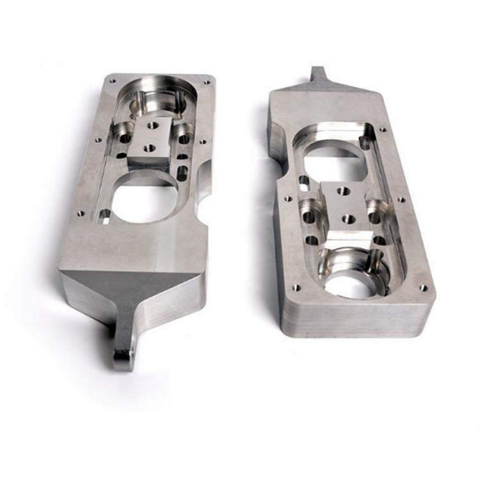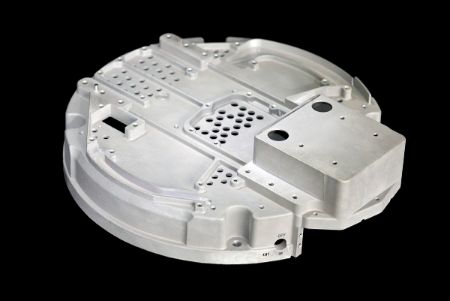Aluminum Casting Techniques: a Deep Dive Into Materials and Methods for Success
Aluminum casting techniques play an essential role in manufacturing. Various methods exist, each suited to different applications and needs. Sand casting is preferred for bigger parts, while die casting is recognized for its precision in high-volume manufacturing. Financial investment casting provides comprehensive styles with exceptional coatings. Understanding these differences can greatly affect task outcomes. aluminum casting. Selecting the appropriate method is not always straightforward, leading to crucial factors to consider that should be explored better.
Recognizing Aluminum Casting: An Introduction
Aluminum casting is a vital manufacturing process employed across various sectors to develop complex elements with high precision. This method includes pouring molten aluminum into a mold and mildew, enabling it to strengthen and take the form of the preferred component. The convenience of aluminum, integrated with its corrosion-resistant and light-weight properties, makes it an excellent selection for applications in auto, aerospace, and consumer items.
Different casting methods exist, each fit to details needs and job ranges. Elements such as mold materials, cooling down rates, and the complexity of the design play a substantial role in identifying one of the most reliable approach. Furthermore, the residential properties of the aluminum alloy made use of can affect the end product's strength, surface area, and resilience finish.
Comprehending the basics of aluminum casting makes it possible for manufacturers to maximize manufacturing procedures, decrease waste, and assurance top quality result, which is important in today's open market.
Sand Casting: Applications and techniques
Among the different strategies used in aluminum casting, sand casting stands apart as a result of its flexibility and cost-effectiveness. This technique includes producing a mold and mildew from a combination of sand and binder, which can be formed to fit complex styles. Once the mold and mildew is ready, liquified aluminum is poured right into it, enabling for intricate attributes and information to be caught.
Sand casting is particularly useful for generating huge components and low-volume production runs, making it excellent for auto parts, machinery components, and imaginative sculptures. The method additionally accommodates a series of aluminum alloys, improving its convenience in numerous applications. Additionally, making use of sand as a mold and mildew material permits for simple improvement and reuse, contributing to environmentally lasting practices. Attaining high dimensional accuracy can provide obstacles, requiring proficient workmanship and cautious control of the casting procedure. Overall, sand casting remains a basic method in aluminum factories worldwide.
Die Casting: Precision and Efficiency
Die casting is a highly efficient technique of creating aluminum parts with exceptional dimensional accuracy and surface finish. This process involves forcing liquified aluminum right into a specifically machined mold and mildew under high stress, which enables for complex styles and minimal material waste. The fast air conditioning of the alloy within the mold leads to a solidified part that typically needs little to no extra machining.
Die casting is especially helpful for high-volume production runs, where consistency and rate are extremely important. It supports the development of complex geometries, making it suitable for various applications, including auto, aerospace, and consumer items.
The procedure can accommodate various aluminum alloys, boosting the the original source mechanical properties of the completed items. With its ability to generate lightweight yet sturdy elements, die casting attracts attention as a recommended technique in contemporary production, providing both precision and performance in aluminum casting.
Investment Casting: Information and Intricacy
Investment casting, also referred to as lost-wax casting, is a versatile and exact approach for producing intricate aluminum components. This strategy is specifically valued for its capacity to develop complex geometries and great information that are often unattainable via various other casting methods. The process starts with a wax pattern, which is covered in a ceramic shell. As soon as the shell hardens, the wax is disappeared, leaving a thorough mold for aluminum pouring.
The benefits of investment casting consist of premium surface area coating and dimensional precision, minimizing the need for substantial machining later. It is especially helpful for tiny to tool production runs where precision is essential. This approach accommodates numerous aluminum alloys, enhancing its applicability throughout markets. Aluminum Casting Company. Eventually, financial investment casting stands apart for its capability to deliver both aesthetic charm and practical efficiency in aluminum elements, making it a recommended selection for developers and engineers seeking complex remedies

Picking the Right Technique for Your Project
Exactly how can like it one establish the most ideal aluminum casting method for a details project? The option process rests on numerous vital aspects, consisting of the complexity of the style, the wanted surface area finish, and production quantity needs. For elaborate styles, investment casting typically confirms advantageous click to read more due to its capability to record great details. Conversely, sand casting might be preferred for bigger, much less complicated components, providing cost-efficiency and flexibility in manufacturing.
Factors to consider pertaining to resistances and mechanical buildings of the last product are vital. For high-performance parts, die casting might be the finest option, as it gives premium dimensional precision and surface area top quality. In enhancement, recognizing the product properties and compatibility with the picked method is essential for guaranteeing the success of the task. Eventually, a comprehensive analysis of these aspects will certainly guide the decision-making process, leading to one of the most effective aluminum casting technique for the certain task available.
Often Asked Questions
What Is the Environmental Impact of Aluminum Casting Methods?

How Can I Boost the Surface Area Finish of Cast Aluminum?
To improve the surface area finish of actors aluminum, one can utilize methods such as sandblasting, brightening, and applying layers. Proper mold and mildew layout and temperature control likewise greatly improve the last surface area top quality of the cast product.
What Safety and security Safety Measures Should Be Taken During Aluminum Casting?
During aluminum casting, essential safety and security precautions consist of using safety gear, making certain proper air flow, using fireproof materials, preserving a risk-free range from liquified steel, and sticking to tools safety and security protocols to protect against injuries and mishaps.
Exactly how Do I Fix Usual Casting Problems?
To repair common casting problems, one should evaluate the mold for damages, assess the alloy make-up, check putting temperature, readjust cooling rates, and assurance correct airing vent to lessen air entrapment and boost casting quality.
What Are the Expenses Related To Different Aluminum Casting Techniques?
The expenses connected with various aluminum casting methods vary substantially, affected by variables such as product expenditures, tools, labor, and manufacturing scale. Budget factors to consider are crucial for choosing the most ideal casting technique for specific tasks.
Sand casting is favored for bigger elements, while die casting is known for its precision in high-volume production. Among the various techniques made use of in aluminum casting, sand casting stands out due to its flexibility and cost-effectiveness. Die casting is an extremely efficient method of generating aluminum parts with remarkable dimensional precision and surface coating. Investment casting, additionally recognized as lost-wax casting, is a functional and precise method for producing complicated aluminum elements. Just how can one determine the most ideal aluminum casting approach for a particular task?